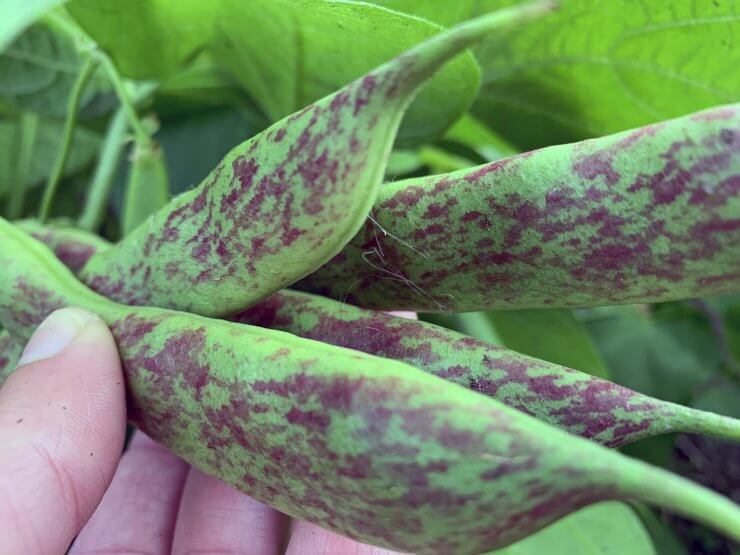
I’ll admit that writing about the different types of beans to grow in your garden is no easy task. You could probably write an entire Ph.D. thesis on beans if you were so inclined. There are hundreds of bean varieties, and within that, there are at least six types of bean plants.
I won’t get into the weeds here (badda bing!), but I will say that aside from being one of the most nutrition-packed vegetables around, beans can have a striking appearance. Dried beans can come in a range of colors, from deep black to speckled pink and white to dark red to almost any color of the rainbow. Of course, dried beans won’t add color to your garden. Bean pods and flowers, on the other hand, will. So let’s take a look at the different types of beans to grow in your garden, and I’ll share a few varieties of each.
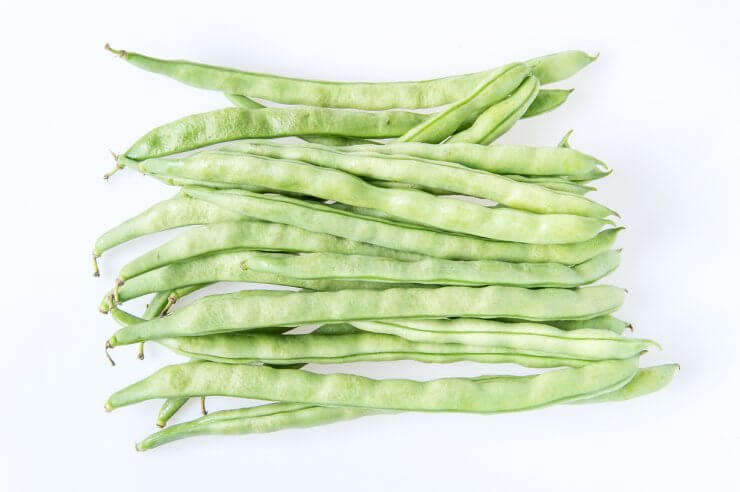
Color everywhere! 7 types of beans to grow your garden into a technicolor wonderland
I’ll start with the two types of beans to grow in your garden; then, we’ll subdivide from there. (Don’t worry. This won’t get too mathy.)
1. Pole beans. Most of us are familiar with pole beans. These are the runner or vining beans that usually need a trellis or something they can climb. Kentucky Wonder pole beans are an excellent heirloom example here. They’re known for their tenderness and flavor, and for color, they’re often vibrant light green.
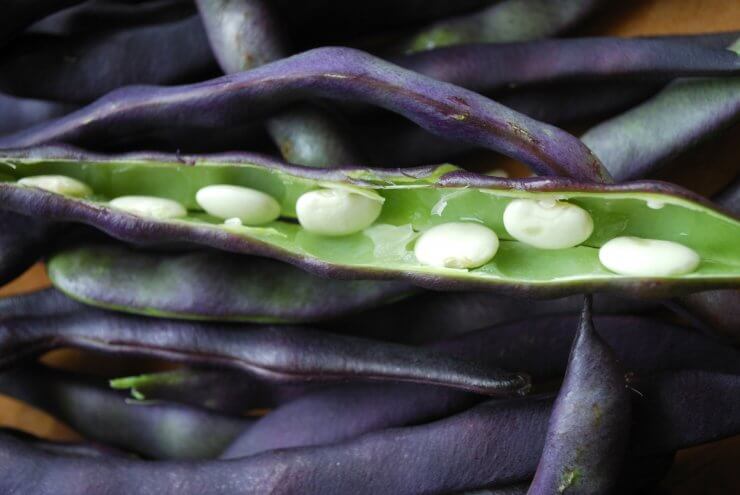
2. Bush beans. As the name implies, Bush beans tend to grow in small mounds, generally about a foot or two high. Purple Dove bush beans will give you deep purple flowers and amazingly rich purple pods. Or you can check out Royal Burgundy beans (pictured above) for something truly stunning.
So we have pole beans and bush beans as the overarching types of beans to grow, but they can also be divided into when you eat them.
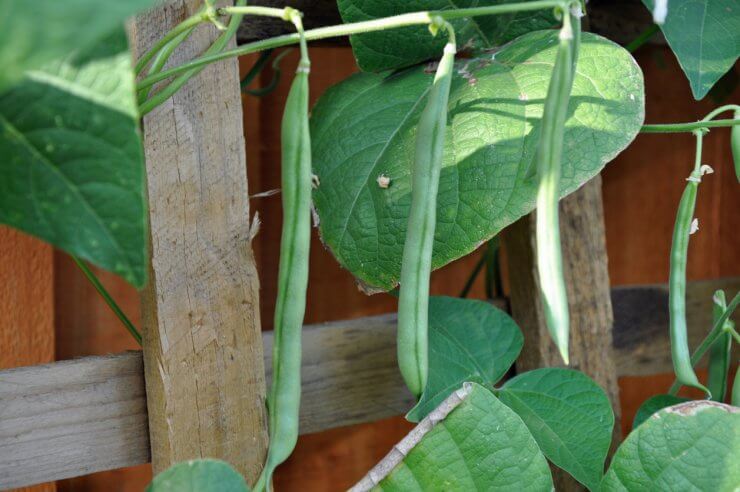
3. Snap beans or String beans. These beans are your typical green beans. You eat the pod and all. One of the varieties to grow in this category is the Gold Mine. These beans are an almost fluorescent greenish gold.
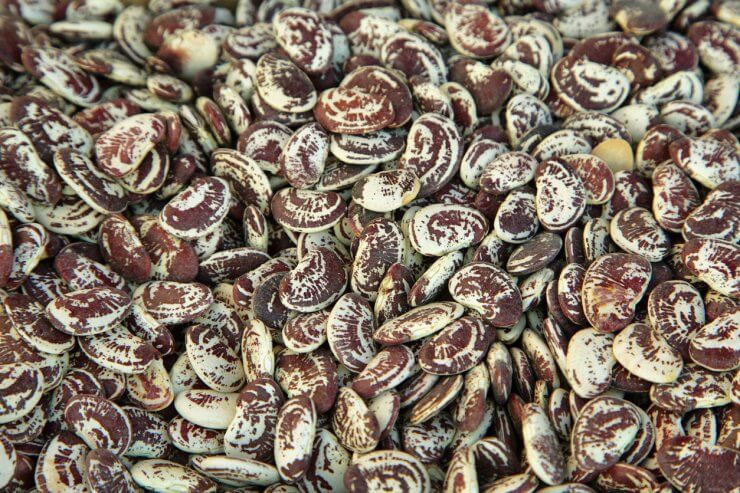
4. Dry beans. This is self-explanatory. Dry beans can come in bush or pole types. These can range from Good Mother Stallard beans to Slippery Silks beans, a Honduran heirloom with vivid red, purple, and green pods.
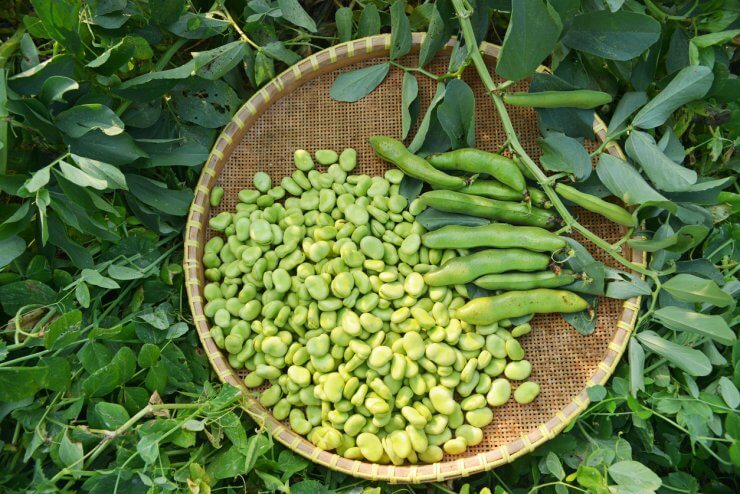
5. Fava beans. Fava beans, or broad beans, as they’re sometimes called, are native to the Mediterranean region. Unlike many beans, they will tolerate some frost and prefer a long, cool growing season. Fava beans may not stand out for their color, but their unique shape and size make them eye-catching. Aquadulce fava beans can withstand temperatures down to around 15 degrees Fahrenheit! That’s better than I can say for myself.
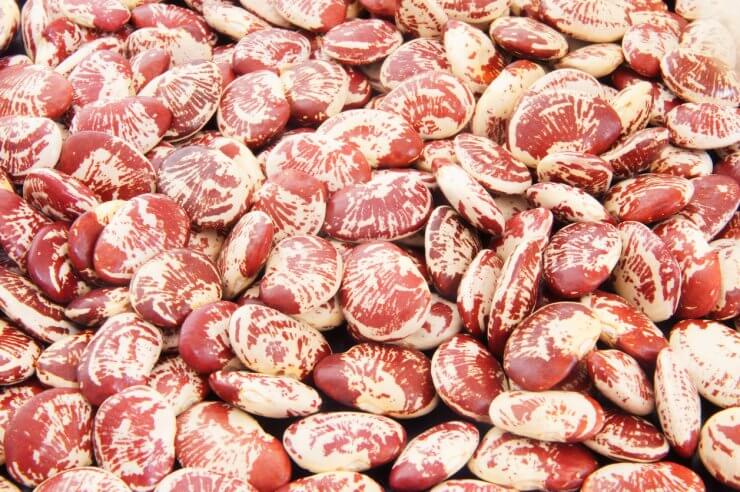
6. Lima beans. Unlike favas, Lima beans need warm temperatures and prefer basking in the sun when it’s between 70 and 80 degrees Fahrenheit. Like favas, Lima bean pods aren’t incredibly colorful, but varieties like the Big Mama can have 8-inch-long pods on 8-to-10-foot vines.
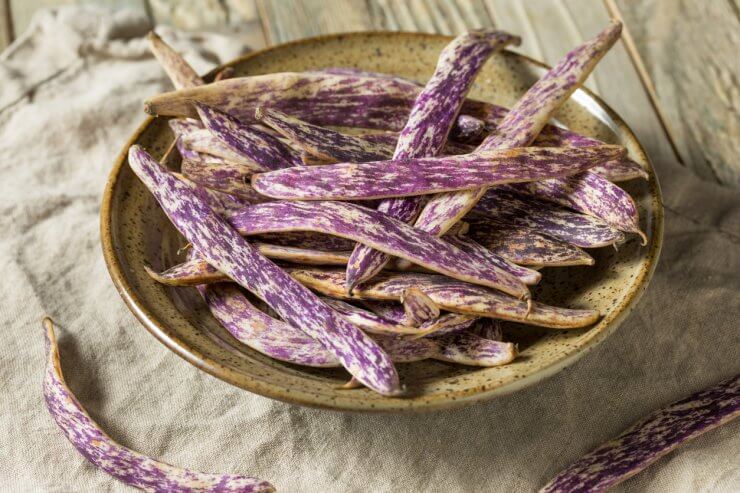
7. Wax beans. Wax beans are similar to green beans and are often bush beans. The most significant difference is in their appearance. Wax beans tend to be shades of yellow with waxy shells. However, some wax beans can be very colorful. For instance, the pod of the Dragon’s Tongue bean is a creamy green color with brilliant purple mottling.
There are still a few more types of beans to grow in a diverse garden, but as you can tell, the line between these different types gets a little confusing. Honestly, there are so many delicious beans out there, that as long as you choose a type and variety that works in your climate, I’m not sure you can go wrong.
To the issue of bringing extra color into your garden, however, here are some varieties you might like.
- Autumn Zebra bean. This Japanese heirloom has gorgeously speckled green, reddish-purple, and cream-colored pods.
- Red Swan bush bean. Nearly solid red pods and pink flowers are sure to bring some color into your garden.
- Tongues of Fire bean. This heirloom has a cool name, for sure! The striking green pods are splashed in red, and the delicate pink flowers add some excellent contrast.
- Scarlet Runner beans. Another heirloom that produces more when you pick the beans. The scarlet-orange flowers stand out against the green leaves and pods.
- Rattlesnake Snap bean. This pole bean can grow 10-foot long vines and produce 8-inch pods in a deep green and speckled with purple.
My advice? Again, don’t worry so much about what type of beans you grow, just be sure that whatever you choose, you have the right space and soil to grow them. And most important of all, grow something you’re excited to eat!
What are some of the most colorful beans you’ve grown? I’d love to check them out. Just tell me about them in the comments.


 Previous
Previous

